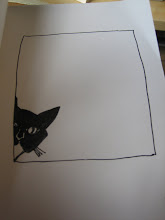I promised a longer post on this exhibition and here it is:
I went to see this photography exhibition at the recently extended Whitechapel on Friday. I hadn't been for years, but the extension was much needed: now it feels like a proper gallery as opposed to popping round someone's house!
The exhibition features photographs from India, Pakistan and Bangladesh taken by photographers from the region from the last 150 years. I think the curators' choice to focus only on regional photographers was a good one: there were no voyeuristic shots of extreme poverty (though there were portraits of people who are poor) and despite the massive scale of the exhibition there was a sense of intimacy.
The exhibition was divided by theme rather than country or chronology. Again, a good curatorial decision that mirrors developments in Partition Studies, which is now focusing on a comparative approach to the history of the subcontinent, recognising that the stories of Pakistan, Bangladesh and India are inextricably entwined. It was nonetheless gratifying to see such a major inclusion from Bangladesh, often the poor, politically irrelevant cousin in South Asian studies.
If Kamila Shamsie's eye was drawn to the pictures of Bangladesh, the nation that had once been the distant wing of her own, I confess mine did too. I couldn't help but be struck by the beauty of the many images supplied by the Drik Archive in Bangladesh (I looked up Drik when I got home: it's a fantastic initiative to collect and exhibit Bangladeshi photography, and I look forward to visiting their stunning gallery when I'm next there). Photos from the 1990 coup also had a major resonance for me, given that my family and I arrived in Dhaka right in the middle of it (what my father was thinking, I shall never know).
I was utterly charmed by early black and white photos of royal families that had been intricately hand-painted with watercolours. One even had glitter sprinkled on the borders of a sari. These were beautiful, but also strange: some examples used cut out photographed faces that were pasted onto Mughal-style paintings, giving a bizarre, hyperreal quality to the overall pictures. And though done at the turn of the century (last), they seemed very modern, of the age of Photoshop. I was intrigued to discover that my mum had had a photograph of hers hand tinted in this way: sadly, like so many things I would dearly love to have as heirlooms, it is lost. It underlines how rare these exhibited photographs are: stuff is ephemeral there, it gets lost in upheaval or fades in the heat. What remains is all the more precious for that.
There are many points of interest I could mention, and indeed, the strength of the exhibition is in this diversity: grand photographs of Jinnah alongside a sobering image of a Bangladeshi farmer against the backdrop of a climate-change devastated landscape alongside an art image of Krishna chilling in a swanky hotel room . It's on until April 11th: go see it, and see which images stay with you.
Sent using BlackBerry® from Orange
Subscribe to:
Post Comments (Atom)


No comments:
Post a Comment